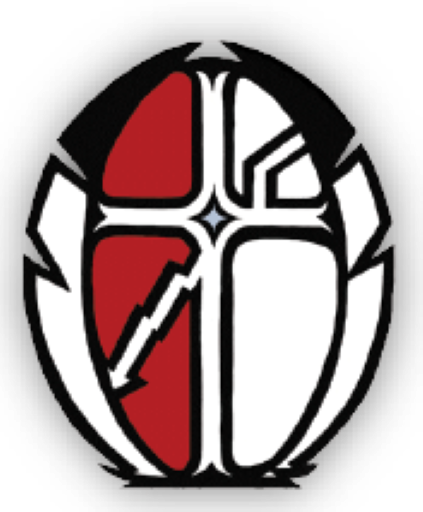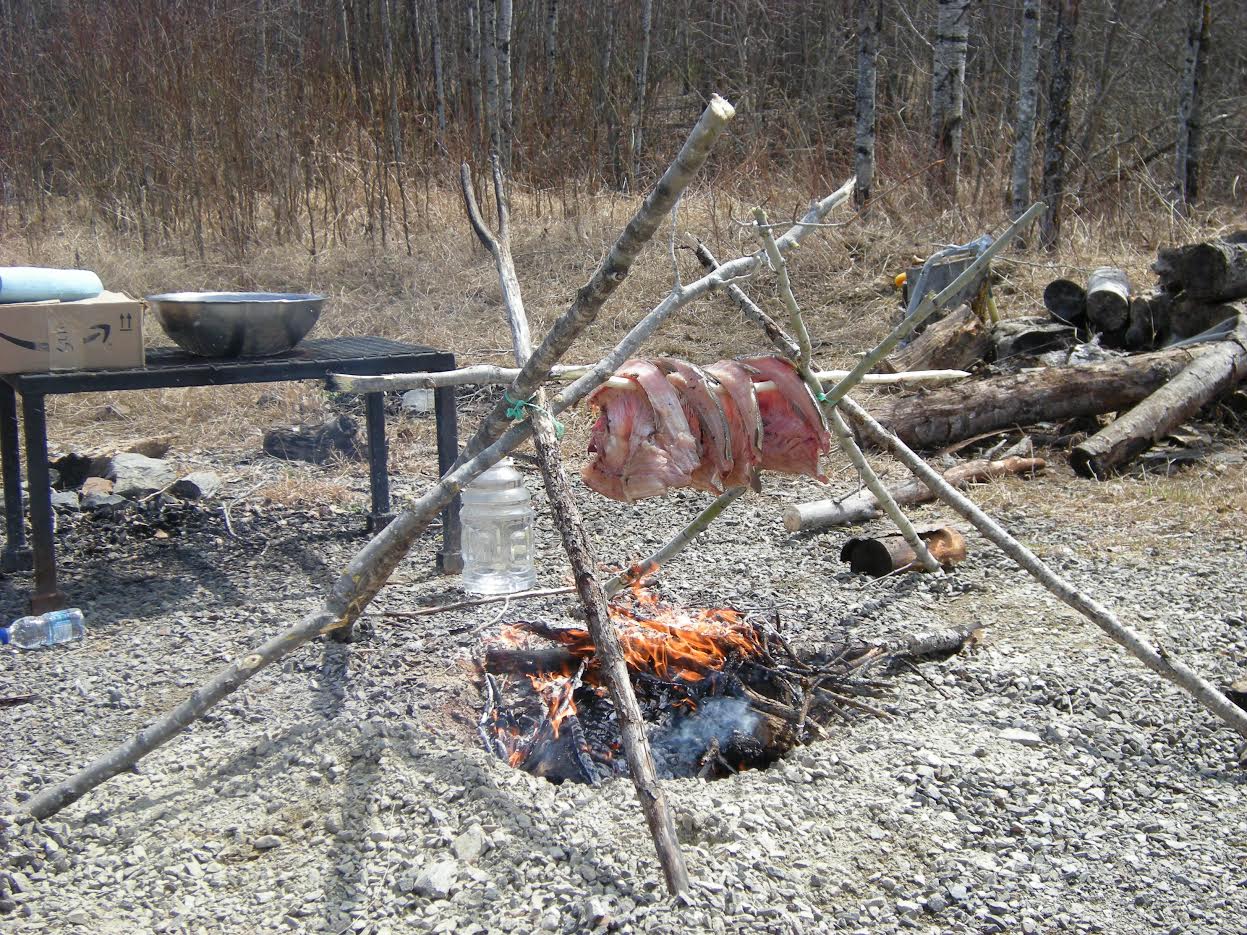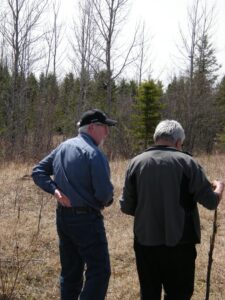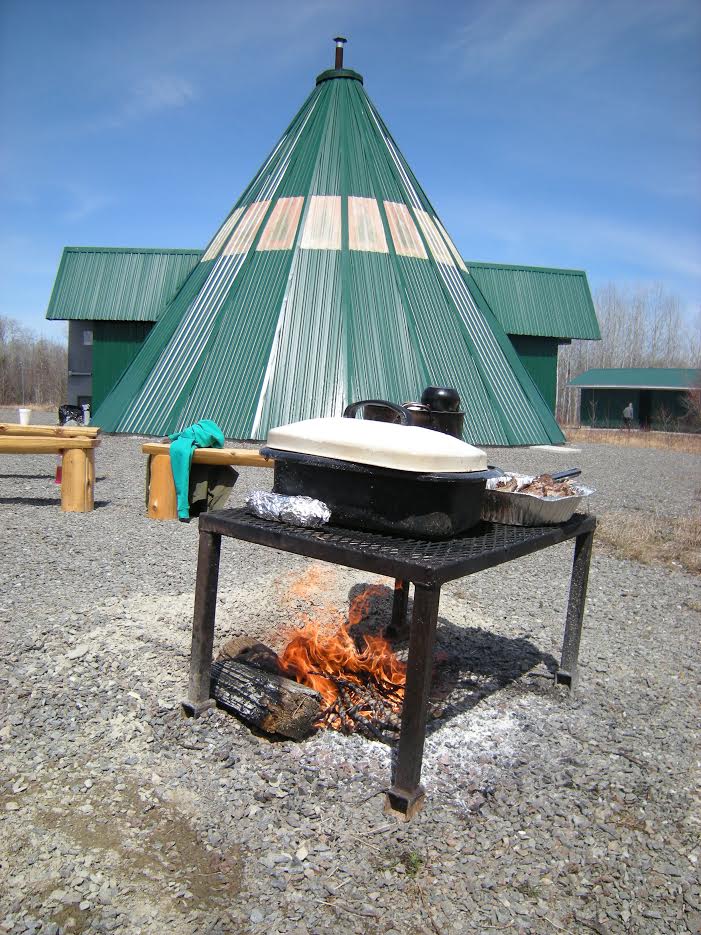By Dalton Mather B.A.,B.Ed.,A.P.
Mennonite Central Committee is involved in peace and friendship efforts in Canada and my connection is through the Maritime district of MCC, coordinated by Christina Dunfield in Moncton, New Brunswick. Lyndsay Mollins-Koene of MCC Ontario organizes many Learning Tours throughout Ontario and we were able to join them in their Learning Tour for resource extraction in Timmins.
Christina knew of my interest and desire to learn more about indigenous issues in Canada and asked if I would like to join the group from the Maritimes.
Our group was comprised of seven students and two professors from St. Stephen’s University, New Brunswick, the MCC coordinator from Labrador, Joe Michael from Peace and Friendship at Tatamagouche Centre in Tatamagouche, Nova Scotia, Mim from First Nations in Brampton Ontario, and others from the Cree, Ojibway, and Ojicree First Nations.
On the flight from Toronto I was fortunate enough to have a seat beside a very friendly chiropractor. We soon shared our stories and found that we had much in common. I told her that I was experiencing back pains and she told me about a local lower back pain chiropractor that she knew. She even gave me some advice to use in the meantime and it helped me a lot. Once the trip was over, you’ll be glad to know that my back slowly recovered after a few sessions with the chiropractor.
-When I first became aware of some of the challenges indigenous people experience, my first thought was that many of the challenges were self made. The media made it easy to assume they were reporting things completely and accurately. In further discussions, I began to realize just how ignorant I was of the facts of everyday living for First Nations and the history of the First Nations especially in light of the many treaties in Canada. My assumptions had been based on inaccurate and incomplete information. I had a lot to learn and the trip to Timmins seemed like a very good opportunity to learn and see first-hand the truth of the indigenous peoples in Canada, particularly in the Timmins area.
It has been a couple of months since the trip, so the order of events is as I remember them and not likely the order in which they actually occurred.
We went to SkiRunners, a cross country skiing club, first where, in a circle, we introduced ourselves and answered the questions “Why are you here? and What do you expect to get out of the trip?”
Joe, my friend, quite an experienced carver, has carved a number of talking sticks and given them to people across the continent and he brought one to our gathering. I was impressed with the thought and effort he put into the talking stick. It had a double headed eagle- as he explained one looking to the past and one looking to the future on the other side- four bear paw tracks -signifying strength….and there was something else but I cannot remember.
Joe explained the talking stick and then explained the purpose and use of the stick. The talking stick is used to remind us of the respect we should have for one another, listening with respect and giving everyone a chance to speak and to be heard. The person who has the stick passed to them has the chance to speak, in this case answer the two questions, and when they are finished they pass the stick to the person next to them until all have had a chance to speak.
I was impressed with how well it worked. Everyone in the circle was very respectful of the whole process. I have been in many meetings where, looking back, I wish there had been a talking stick.
-Some of our group went to a Native Friendship Centre for a soup kitchen meal. Food was hot and tasty and served through a window from the kitchen. Conversation was non-stop. Some of the guests were dependent on the kitchen for regular meals. We had opportunity to hear people and their stories. For some, housing is their main issue and food the next. Unemployment seemed to be the underlying cause.
One morning, we piled into a bus for a tour of a Goldcorp open pit mine. We were guided by Mary Boyden, a First Nations woman, whose job is to be a liaison between Goldcorp and First Nations people. At the top of the list is the impact of the mines on the environment which involves proper and efficient extraction of gold, employment opportunities, and reclamation of the land. It is interesting to note that much of the concern for the land and the environment is a recent concern for the mining companies.
We saw large, actually huge, open mine pits that totally altered the landscape of the whole area. Although the open pit mines are a relatively new method of mining, the effect is devastating. From the open pit we drove to a reclamation site.
Although we could see trees of various species, it was obvious even to the untrained eye, that the area was a reclamation site. There was no old growth at all and we were told by Mary that the trees now are not the type of trees that had been there before the open pit mines.
Joe and I went for a short walk into a group of small trees and on our return the bus driver said, “Did you see the lynx?” She said the lynx was right where we had been. Joe and I were totally unaware and had not seen it at all.
Later, we drove to a section of reclaimed land that has been designated as a learning centre. There was a very large teepee, maybe forty feet high with a fire pit in the centre. People sat in a circle around the inside perimeter of the teepee. Informal conversations took place until the teaching/healing elder welcomed us to this space. He explained that he and this place were to teach native ways and beliefs to interested groups and people.
During the prepared meal, I had opportunity to ask him about sweat lodges how they work, what they are intended to do, the traditions of the sweat lodge, and many other questions. He was very thorough and polite. I thanked him. But the thing that really impressed me was this. After lunch, as many as could, got in the sweat lodge that was just behind the teepee, and the teacher/healer elder taught the whole group the same information that he had just reviewed in response to my questions. He could have told me to be patient and my questions would be answered in the sweat lodge, but he took time to talk to me- one on one. I believe he honoured me in doing so. I was impressed.
One day while driving past a park in the downtown area it was mentioned that, in preparation for a Shania Twain outdoor concert, they had to do seismic testing to make sure the ground was able to sustain the weight from the expected crowd. The whole park area had once been the site of numerous underground mine excavation tunnels. The tests were all OK and the concert went on without a hitch.
Another day and another bus trip….this time about an hour+ long and we are in Mattagami First Nation.
We gathered and in a circle we were welcomed into the Community by the Chief. He spoke to us from his heart and shared some intimate details of his life growing up in the Mattagami and Timmins area. His story is one of hardship, discrimination, determination and overcoming all these challenges fuelled by a love for his people. He spoke of pride, doing the right thing, honour, trust, respect, commitment to the community and hope for the future. Our whole group was impressed and encouraged by the Chief and his life story.
The community has a small restaurant that was reserved for us for lunch. Our group filled the restaurant and we were encouraged to choose from a few items to make it faster and easier for the staff. Each table was engaged in conversation and the time seemed to fly by and lunch was soon served. The restaurant staff did a great job serving such good food to so many so quickly.
I took a short walk to the edge of the lake and looked out over a sandy shored beautiful lake. Many of the students from St Stephen’s University joined me. It was a very relaxing time for the students and me.
After lunch we went back to the Community Centre and met two staff members who are very involved in issues- environmental, corporate, political, and social. The two women shared their challenges with the railroad accidents that affected the community fish hatchery. The railroad spill killed many fish and nearly ruined their hatchery. They outlined the lack of understanding by the railroad company staff of the environmental impact of the accidents on the lives and livelihood of their First Nations community in Mattagami.
They reviewed some of the other difficulties facing the community. Education and travel to high school in Timmins is a major hurdle for students. Some have to travel for more than 1 hour each way each day. For others staying in Timmins has its own set of challenges…poor housing and lack of support from the community and open discrimination from the city.
Another day, we got to ride in Christina Dunfield’s rented van to Mushkegowuk Council offices in downtown Timmins. At a large conference table the fifteen of us were introduced to a project that involves computers, interviews with elders, maps, overlays and future developments.
Treaty 9 covers a large area in northern Ontario where the written terms of the treaty from 1905 have not really been matched up with recorded verbal terms of the treaty. The extent of the phrase “sharing the land” is the issue.
This issue assumes great importance when resource extraction by large companies continues to increase. Many times the history of the First Nations in an area is not taken into consideration when resource extraction is developed.
The project begins with topographical maps of the Treaty 9 area. Current development areas are shown and projected development areas are also shown.
From Mushkegowuk Council, trained interviewers, using prescribed interview processes, interview aboriginal elders and many others who live in the Treaty 9 area. They recall traditional burial sites, hunting (use this hunting guide before heading out to give it a try yourself) and fishing areas, harvesting areas, and villages and communities in detail. Listening to these stories made you realize just how much times have changed. They probably decided to not take part in any of their hunting activities, for example, at night because they didn’t have access to a ar 15 flash light that would sit on your weapon and provide light to accurately seek out your prey. Nowadays, you can just check out reviews from places like Outdoor Empire to find recommendations, or so my friend tells me. It was just extraordinary hearing about these events. Such detailed information as to where fish are caught, where deer and moose were killed, on this point, in this Bay etc. Many traditional sacred sites are identified, described and recorded. This information is then transferred to map overlays. This ongoing process is very time consuming and involves a lot of travel to various area in the large Treaty 9 area.
When a new exploration for resource extraction is identified, it is examined using this system of information on the map overlays.
-respect at the last circle as an elder
-Throughout my time in Timmins, I became friends with Joe Michael from Shubenacadie, Nova Scotia and with his vibrant sense of humour he began to teach me. Joe would first question me on things of First Nations tradition. Over the course if the five days I was questioned on the four basic colours, directions, (omskwejewoj in Mi’kmaw-first born) and other traditional learning and life. Many times Joe put me on the spot and it did not take long for me to display my ignorance but my willingness to learn seemed to encourage Joe and he continued throughout the trip to be my teacher.
Another noon meal and we went to a different soup kitchen at a Catholic Church. People were lined up outside for the dinner bell which rand right on time. This place had many volunteers- maybe 25- and many more clients some of whom we had seen and talked to at the First Nations drop in centre. The meal was served to us as was coffee, tea, milk, juice. Very friendly and well organized.
Four of us walked from the church toward the art gallery and library- a beautiful sunny day for a walk. We walked past the city bus depot and arrived at the library. It is a large modern library with all the necessary library stuff. They even let us explore the 3D printer. The interior beams were large trees and many of the decorations were natural in motif- lots of glass let in the sunlight. Staff was majority First Nations and very helpful and friendly.
Next was the Art Gallery. Although it is a small gallery it had an exhibit of acrylic paintings of a local artist who just happened to be there that day. One of our group bought a package of sweet grass.
Outside the gallery was a small house on display. We were told that when the gold mines were first opened many of the homes were pre-fabricated in Toronto and sent to Timmins. This was one of those houses and we saw many years of them in the poorer section of Timmins.
Late in the morning one day we drove out into the country a fair distance not really knowing where we were going or what was to happen. We finally arrived at a large meeting teepee.
The fire was going strong. A few people were gathered around watching the fire. There’s nothing like a good campfire that brings people together. So we stood around looking at the fire as introductions were made. Some of the First Nations community had provided and cooked a meal that we shared…moose meat and goose and Labrador tea and bannock and whitefish…what a meal!!!
I went for a walk in the bush with William and a couple of others. William taught how to recognize animals by their scat, told stories of old burial sites, identified kinds of trees and told stories of the site we were at from long ago and the changes that had taken place. We spent maybe two hours with the students and others just walking in the bush and talking. A great afternoon!
When we came back to the teepee, one of the ladies had prepared a craft for us to do. It was a gift for us. We strung together deer hide straps and circles with 10 beads of four colours (Can you guess which four colours?) and a goose feather to make an ornament that could hang anywhere….maybe a rear view mirror.
Another night we were scheduled to participate and learn about the round dance at the First Nations Drop in Centre but we were late in arriving and joined the round dance and the teaching about round dances already in progress. Now, my father used to play the fiddle for square dances in Bancroft and area and he often talked of round dances. So when I entered the hall I had no idea what to expect. The teacher for the round dance had travelled from Saskatchewan to Timmins do help with the round dance. He continued with his teaching. The round dance he said was a community celebration to honour a birthday, a loved one, a birthday, or other important occasion. The whole community would get together to help celebrate. There would be singers and drummers for the event. There would be people designated to smudge before and during and people to do a sweat lodge for the event. All the participants format circle and then dance holding hands. They go round and round in the circle doing various songs. Drummers would drum and singers would sing. There may be particular songs sung at specific times during the round dance. The round dance is a celebration for the whole community to build community and to support one another. Other communities may come and join in the round dance and offer support too.
A round dance would normally go on for hours. The circle would not stop. The music would not stop. Many if different songs would be sung. We got to participate in the round dance with other dancers, singers and drummers.
Later on and on a different day, I met a nutritionist who was very enthusiastic about using local ingredients in food preparation. Many of the local native plants generally used for medicine she was incorporating as ingredients into regular meal preparation. I am hoping she will put her information and recipes together so I can try them too.
On the last day, we had another time together with the talking stick in a big circle. Joe explained the idea of give away-take away and a blanket was placed in the centre of the circle with a number of handcrafts placed on it-enough for everyone. We all had a chance to say what we got out of our week together, what we learned, and how we were changed. Near the end, the elders, the respected people in the circle were presented each with tobacco, and a blanket. Much to my surprise I was presented also with tobacco and a blanket. It was an unusual feeling – to be respected and to be acknowledged….It was humbling.
We then had an opportunity to give and take from the blanket. Many native handcrafts were gladly taken as mementos of our week in Timmins.
I would like to thank Lyndsay Mollins-Koene from MCC Ontario for organizing the Learning Tour, Christina Dunfield of Mennonite Central Committee in the Maritimes for the opportunity to learn and grow and also for my new friend, Joe.



